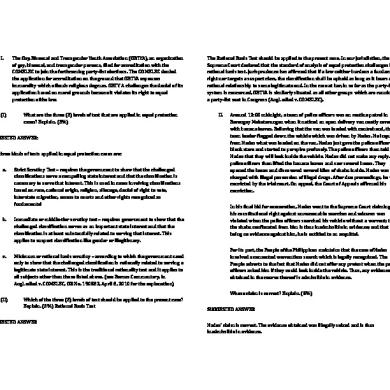Air Pollution Audio Reaction.docx
This document was uploaded by user and they confirmed that they have the permission to share it. If you are author or own the copyright of this book, please report to us by using this DMCA report form. Report DMCA
Overview
Download & View Air Pollution Audio Reaction.docx as PDF for free.
More details
- Words: 502
- Pages: 2
The Philippines home to one of the world’s most polluted cities, is a country that had the 3rd highest no. of deaths due to air pollution, first is China then Mongolia, according to world health organization or WHO The history to fight air pollution can be dated back in the latter part of the 13th century, in an effort to reduce air pollution, England’s King Edward the first threatened Londoners with harsh penalties if they didn’t stop burning sea-coal. However, the king’s regulations–and those of subsequent leaders–had little effect. Acid rain was first discovered in the 1850s, it was another problem resulting from coal-powered plants. The release of human-produced sulfur and nitrogen compounds into the atmosphere negatively impacted plants, fish, soil, forests and some building materials. By the late 18th century and first part of the 19th century, coal came into large-scale use during the Industrial Revolution. In 1948, severe industrial air pollution created deadly smog that asphyxiated 20 people in Donora, Pennsylvania, and made 7,000 more sick. The result of smog and soot had serious health impacts on the residents of growing urban centers. In the Great Smog of 1952, pollutants from factories and home fireplaces mixed with air condensation killed at least 4,000 people in London over the course of several days. Along with amazing technological advances, the Industrial Revolution of the mid-19th century introduced new sources of air and water pollution. By the middle of the 20th century, the effect of these changes has begun to be felt in countries around the world. In the 1960s, an environmental movement began to emerge that sought to stem the tide of pollutants flowing into the planet’s ecosystems. Out of this movement came events like Earth Day and here in the Philippines after wrangling and a massive nationwide campaign to gather signature they have passed the Republic Act no. 8749 otherwise known as Clean Air Act. In a statement, Dr. Roger Dazo, outgoing CAMANAVA Governor of the Philippine Medical Association said, “45.3 deaths per 100,000 Filipinos due to air pollution, 45.3 Filipinos are too many. We can’t afford to lose our countrymen to preventable health problems it brings like heart disease and stroke."
According to WHO, there 7 million deaths related to air pollution, 2.2 million were caused by heart disease or stroke. Those air pollution diseases were chronic obstructive pulmonary disease, lung cancer, and pneumonia was other leading causes. Outdoor air pollution was mainly caused by “inefficient energy use in households, industries, the agriculture and transport sectors, as well as coal-fired power plants,” WHO said. To address the situation, experts said the government and the public should look to using renewable energy sources instead of coal and fossil fuels. Former Department of Health Secretary Esperanza Cabral said efforts should be focused on addressing root causes of health problems in order to prevent deaths. “It is time we embrace the adage of putting a premium on prevention of disease over cure... We address air pollution, we address these diseases," she said. –
According to WHO, there 7 million deaths related to air pollution, 2.2 million were caused by heart disease or stroke. Those air pollution diseases were chronic obstructive pulmonary disease, lung cancer, and pneumonia was other leading causes. Outdoor air pollution was mainly caused by “inefficient energy use in households, industries, the agriculture and transport sectors, as well as coal-fired power plants,” WHO said. To address the situation, experts said the government and the public should look to using renewable energy sources instead of coal and fossil fuels. Former Department of Health Secretary Esperanza Cabral said efforts should be focused on addressing root causes of health problems in order to prevent deaths. “It is time we embrace the adage of putting a premium on prevention of disease over cure... We address air pollution, we address these diseases," she said. –
Related Documents

Air Pollution Audio Reaction.docx
April 2020 2
Air Pollution
June 2020 21
Air Pollution
July 2020 18
Air Pollution
June 2020 19
Air Pollution
November 2019 41
Air Pollution
October 2019 33More Documents from ""

Air Pollution Audio Reaction.docx
April 2020 2
Bar Q And A.docx
April 2020 5
Apostila Cad2004 Faenquil
December 2019 34
Bar Q And A.docx
April 2020 3
